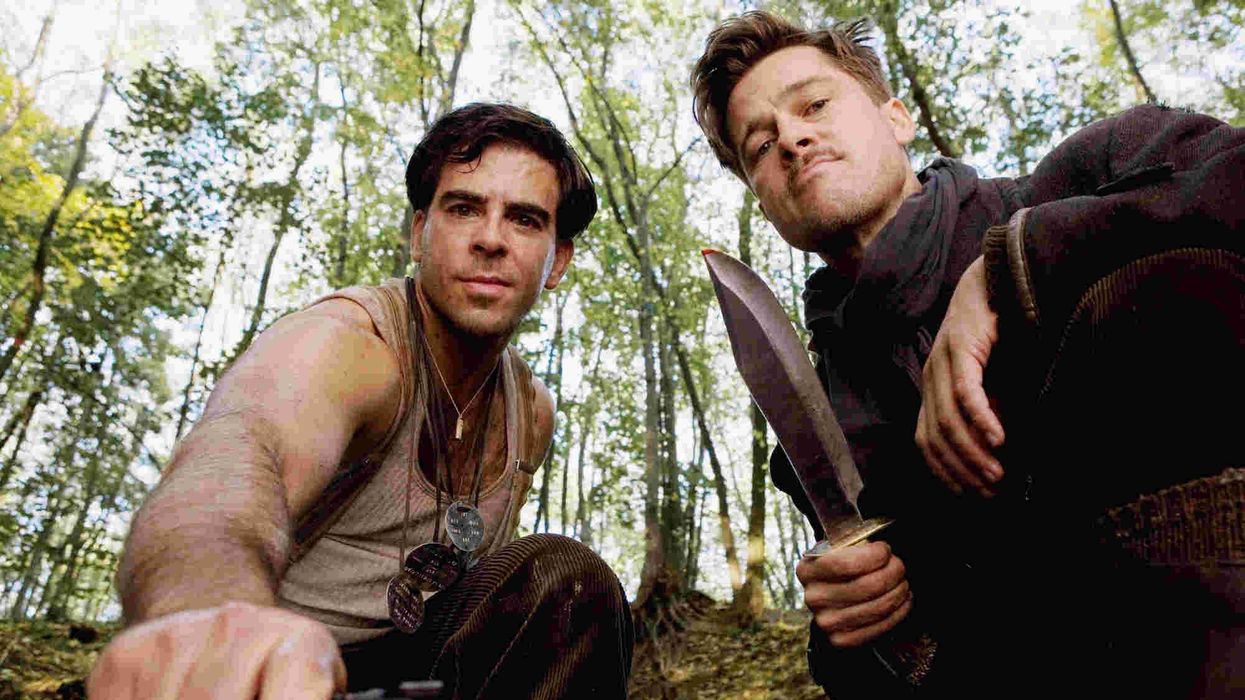Watch: How Tarantino Creates Nail-Biting Suspense in 'Inglourious Basterds'
Here's how you can emulate Tarantino's screenwriting, which made the opening sequence of Inglourious Basterds so suspenseful.

Inglourious Basterds, Quentin Tarantino's 2009 take on the "men on a mission genre," was (very) loosely based on the 1978 film Inglorious Bastards (itself a loose remake of The Dirty Dozen).
Basterds opens with 12 minutes of unrelenting suspense. In the below video essay, Michael Tucker of Lessons from the Screenplay breaks down the 17-page scene and demonstrates how Tarantino crafts such a masterfully suspenseful opening—arguably one of the most effective in recent cinema. (Check out some other great openings.)
"A rich look at a bravura opening sequence, examined through not only the art of light and shadow, but psychology and character."
Tucker examines the scene through the lens not just of cinema (i.e. the famous Hitchcock example of suspense as the ironic "ticking bomb," which the audience, not the characters, knows will detonate), but through a rather obscure scholarly essay.
In "Toward a General Psychological Model of Tension and Suspense," written by Moritz Lehne and Stefan Koelsch, the two authors argue that one of the key elements of tension and suspense, along with conflict and dissonance, is instability. This is the key to unlocking Tarantino's opening sequence.
As the film opens, we see a bucolic farm scene: laundry is hung out to dry, a man chops wood. Tucker notes that in the screenplay, Tarantino writes: "However, simply by sight, you’d never know if he’s been beating at this stump for the last year or just started today." There is a stability established—one which will be shortly be disrupted by the arrival of Christopher Waltz's utterly villainous Nazi officer, Landa.
Quoting the paper, Tucker relays that such a disruption "creates tension and suspense in the audience that persists until the conflict is resolved and replaced by a more stable state." Now, this is a bedrock principle of drama—the world thrown out of balance—but it is always enlightening to look at art through disciplines other than art.
Another fruitful object of contemplation can be found in Freud's vastly influential essay, "The Uncanny." Indeed, Freud's ideas can contribute to an understanding of this scene. Roughly translated as "unhomelike," the idea of the uncanny is one of Freud's key concepts that is purely aesthetic, found in storytelling but seldom in life. He described it as the feeling of "uncertainty [if] a particular figure in the story is a human being or an automaton." This certainly applies to Landa, who smokes a ridiculous Sherlock Holmes pipe and ostentatiously drinks milk; Tarantino even discussed the idea of the pipe and its importance to the character on Charlie Rose.
Tarantino states that, in his view, Waltz' character, a self-described "detective," treats every interaction as an interrogation, a mind-game, or "theater," and so he brings props to each of these interactions—including the pipe, the same sort that Sherlock Holmes smoked. In the scene, as in the others in which he appears, Waltz pompously plays himself up as a master thinker, though this is belied by his murderous actions (his solution to this fatuous "mystery" that is the ostensible reason for his visit is to send in machine guns). This theatrical quality contributes to the "dissonance" mentioned in the essay, and is also very similar to the "uncanny" nature of the scene.
Tucker's essay is a rich look at a bravura opening sequence, one examined through not only the art of light and shadow, but psychology and character. If you're interested in creating suspense or tension in your films, it's well worth a watch.
Source: Lessons from the Screenplay












